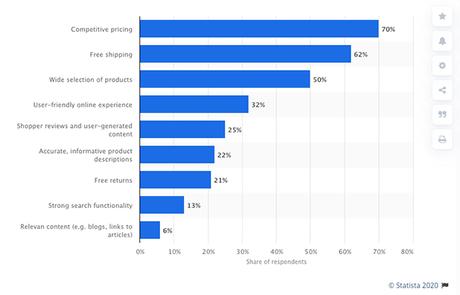70% of US shoppers on a recent survey stated that competitive prices are the most important factor influencing their buying decisions. Prices change at an unprecedented pace as a result of stiff competition and a growingly price-sensitive consumer base. Price Intelligence gives retailers a headstart in this harshly competitive environment by providing crucial insights to sales, accounting, purchasing, and marketing teams.

Sales
First and foremost, PI will grant you a competitive edge. Modern consumers are price sensitive and tech-savvy, two characteristics that reinforce each other. Neither you, nor I buy something before a quick price search online, and customers are no different than us.
Having PI in pricing decisions helps your sales team offer good deals to lure new customers into your store.
When competitors discount, your team will be able to react on time. Of course, having to compete with Amazon's Black Friday deals is a bit intimidating. Fortunately, you don't have to.
PI tells you on which products/brands competitors entered a price war. In some cases, those are the products you shouldn't compete. To say, you can't beat Walmart at loss-leaders on a Cyber Monday, but you can boost other products' sales with attractive deals.
In other cases, PI helps you catch competitors off guard.
Your rivals will assume that their off-season discounts will go unnoticed, but that's not the case. You'll be able to detect their campaign on time and react with counter discounts before they succeed. What's even better is, most retailers don't benefit from PI yet, so they won't even notice your counter-campaigns.
To achieve long-term success, however, you need long-term strategic planning. Observe for a while, and you'll notice that there are patterns in competitors' pricing behavior. Which products/brands/categories are they most competitive at, what type of products they bundle, duration of their sales campaigns, their off-season sales, etc.
All of these insights help you in long-term strategic planning. If you can't beat a competitor on a particular brand, you can work on another. Or if you can't beat their discounts on Valentine's Day, extend your campaign till theirs is over. In short, you get a chance to observe their strengths and weaknesses and develop a strategy accordingly.
Accounting
Business costs change over time and your prices must be flexible accordingly. When your accounting department reports an increase in your costs, PI enables you to increase prices without pricing yourself out of the competition.
Even without fluctuating costs, you must continuously test different price points, since they all yield different results. PI tells you when to stop raising/cutting prices before losing your competitive advantage.
Purchasing
Negotiating with suppliers has never been easy. We know you trust your team members in that. But your competitive strength shouldn't depend on a person's capabilities. Preferably, your brand must have solid negotiation power.
If a competitor has a much better deal with a supplier, PI reveals it. The giants naturally get the best deals, as a result of their purchasing volume, but there is no reason why an SMB gets a better deal than yours. Your purchasing department can leverage PI knowledge when negotiating with suppliers.
Your team can also utilize it when getting rid of slow-moving stock. Sometimes some products remain in inventory for too long that they become costly. That's when most sellers cut prices too below the market average. The problem is, they leave too much money on the table.
PI gives you the percentage of discount that'll make your offer attractive, without unnecessarily cutting into profits. Instead of starting with a price too low, you'll lower prices gradually and profit as much as you can along the way.
Marketing
Comparison shopping engines (CSEs) have become the first step in our purchasing journey. We no more buy a product without a price search, which takes no more than a few seconds on a CSE.
PI driven prices rank at the top on a CSE search, drastically increasing your visibility. It'll boost your organic website traffic and attract so many new customers. In other words, it's a free marketing channel.
The cheapest, average, or a luxury one. No matter where you want to position your brand, you need competitor price information. Once you locate all the other players in the market with PI, you'll have total control over your positioning.
What if you don't want to stick with a price range, but instead, want to target different segments in the market? PI tells you approximately the maximum price customers are willing the pay for a product, and the median point where most competitors price it.
With a dynamic pricing strategy integrated with PI knowledge, you'll be able to target each market segment at different price points.
Surely you want to expand your business, perhaps adding new products to your assortment. But rushing into new product markets is a bit risky. To minimize the risks, you must gather the average price of this product, the number, and the positioning of your competitors. These insights tell you how to price your product competitively.
Parting Words
Every company needs a Price Intelligence function, e-commerce companies more than others. Online retailers have to compete on price, due to the transparency of online prices and online shoppers who've made a habit of price comparison prior to purchasing decisions.
Price Intelligence helps accounting, sales, purchasing and marketing departments on different levels. It's even more crucial for small businesses where very few people handle all these tasks. The competitive edge you gain from integrating PI into your decision making will grant you long-term success.

